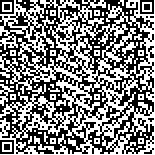王晓璇,宋彦澄,杨燕龙,等.静息态功能磁共振观察经颅直流电刺激对脑卒中后图片命名功能障碍的影响[J].中华物理医学与康复杂志,2024,46(11):973-979
扫码阅读全文

|
| 静息态功能磁共振观察经颅直流电刺激对脑卒中后图片命名功能障碍的影响 |
|
| |
| DOI:10.3760/cma.j.cn421666-20220523-00557 |
| 中文关键词: 失语症 静息态功能磁共振成像 低频振幅 局部一致性 经颅直流电刺激 |
| 英文关键词: Aphasia Resting-state imaging Functional magnetic resonance imaging Magnetic resonance amplitude fluctuations Brain region homogeneity Transcranial direct current stimulation |
| 基金项目:河北省卫生健康委员会2021年度医学科学研究课题项目(20210448) |
|
| 摘要点击次数: 2653 |
| 全文下载次数: 2643 |
| 中文摘要: |
| 目的 采用静息态功能磁共振成像(rs-fMRI)观察脑梗死后失语患者经经颅直流电刺激(tDCS)治疗前、后语言相关脑区rs-MRI激活变化,探讨这些变化对其图片命名功能改善的影响。 方法 选取脑梗死后失语并图片命名功能障碍患者28例,设为患者组,按病程再将其分为急性期组(病程<1个月)和恢复期组(病程2~6个月)2个亚组;同期招募年龄、性别和受教育年限与患者组相近的健康受试者18例作为健康组。急性期组和恢复期组均接受tDCS治疗,每日治疗1次,每周5 d,连续治疗2周。于治疗前和治疗2周后(治疗后)对急性期组和恢复期组进行汉语失语症心理语言评价(PACA)评分和rs-fMRI检测(检测言语相关脑区的激活情况),并与健康组的rs-fMRI检测结果进行对照分析。 结果 治疗后,急性期组和恢复期组的PACA图片命名评分分别为(23.00±7.12)分和(16.75±8.35)分,均显著优于组内治疗前,差异均有统计学意义(P<0.05)。患者组较健康组ALFF出现正向激活的脑区有右侧颞下回,负向激活的脑区有左侧中央后回,差异均有统计学意义(P<0.01);ReHo出现正向激活的脑区有右侧眶部额上回、左侧内侧额上回、距状裂周围皮质、左侧顶上回,负向激活的脑区有右侧中央后回,差异均有统计学意义(P<0.01)。治疗后,急性期组的ALFF较组内治疗前差异有统计学意义(P<0.01)的正向激活脑区有右侧额上回、右侧角回;治疗后,急性期组的ReHo较组内治疗前差异有统计学意义(P<0.01)的正向激活脑区有右侧直回、右侧角回、右侧额上回、右侧颞下回。治疗后,恢复期组的ALFF较组内治疗前差异有统计学意义(P<0.01)的正向激活脑区有左侧枕中回、右侧梭状回,负向激活脑区有右侧岛叶。治疗后,恢复期组的ReHo较组内治疗前差异有统计学意义的正向激活脑区有左侧颞上回、右侧角回。 结论 tDCS干预可改善脑卒中后失语患者的图片命名功能。tDCS对语言功能的修复机制,急性期患者以右侧半球语言功能脑区代偿激活为主;而恢复期患者除此以外,还伴有左侧大脑半球语言功能未受损脑区的激活,提示脑梗死后失语患者长期语言功能的恢复可能是两侧半球协同作用的结果。 |
| 英文摘要: |
| Objective To document any effect of transcranial direct current stimulation (tDCS) on the picture naming ability of stroke survivors with aphasia. Methods Twenty-eight aphasic stoke survivors with picture naming dysfunction were divided into an acute group (with a course of disease of <1 month) and a convalescent group (with a course of disease of 2 to 6 months). Eighteen healthy subjects well-matched for age, gender and years of education formed the healthy control group. The patient group received tDCS once a day, 5 days a week for 2 weeks. Before and after the intervention, they were assessed using the Chinese psycholinguistic aphasia assessment (PACA) instrument. The activation of speech-related brain areas in everyone was quantified using resting state functional magnetic imaging (rs-fMRI). Results After treatment the average PACA image naming scores of both the acute and convalescent groups had improved significantly. ALFF showed significant positive activation in the patient group′s right inferior temporal gyrus and negative activation in their left posterior central gyrus, while ReHo was significantly and positively activated in the right orbital superior frontal gyrus, the left medial superior frontal gyrus, the pericalar fissure cortex and the left parietal gyrus. It was, however, significantly negatively activated in the right posterior central gyrus. In the acute stage group, the ALFF was significantly and positively activated in the right superior frontal gyrus and right angular gyrus after the treatment, while the significant positive ReHo activation was in the right direct gyrus, the right angular gyrus, the right superior frontal gyrus and the right inferior temporal gyrus. In the convalescent group after the intervention the ALFF was significantly and positively activated in the left middle occipital gyrus and the right fusiform gyrus but negatively and significantly activated in the right insula, while ReHo was significantly and positively activated in the left superior temporal gyrus and the right angular gyrus. Conclusions tDCS can improve the image naming of aphasic stroke survivors. The compensatory activation of language function is mainly in the right hemisphere in the acute stage, but in the convalescent stage the unimpaired brain area of the left cerebral hemisphere is also activated. The long-term recovery of language functioning may be the result of synergy between the hemispheres. |
|
查看全文
查看/发表评论 下载PDF阅读器 |
| 关闭 |